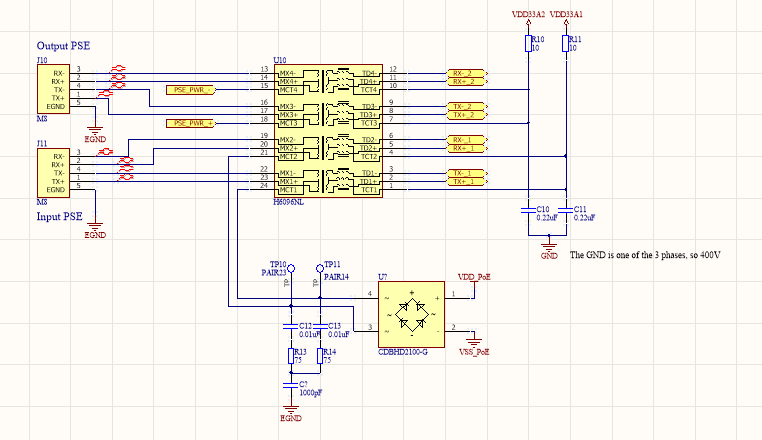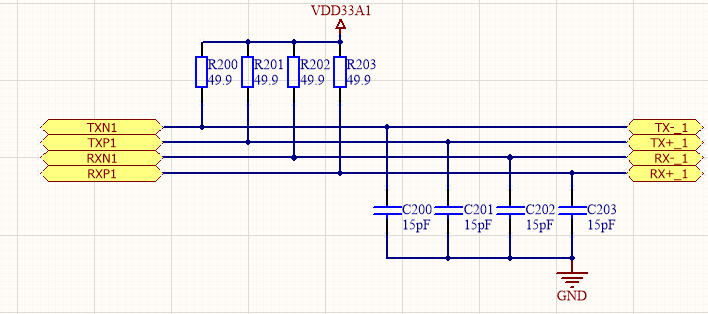Hello,
I'm trying to design a PD device with the SLVU682 User's Guide in reference.
My question is about the GND near C11 and C12 in the schematic on page 4 of this document.
Are they the same GND ?
Moreover, i can't understand the relevance of the resistance R1, R2, R3 and R4. Can anyone help me about this ?
Finally, do we agree that the circuit, after the DC/DC, must be isolated ?
Thank you in advance.
Matteo Baldi



